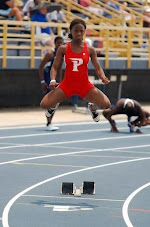Question MarkOrigin: When early scholars wrote in
Latin, they would place the word questio - meaning "question" - at the end of a sentence to indicate a query. To conserve valuable space, writing it was soon shortened to qo, which caused another problem - readers might mistake it for the ending of a word. So they squashed the letters into a symbol: a lowercased q on top of an o. Over time the o shrank to a dot and the q to a squiggle, giving us our current question mark.
Exclamation PointOrigin: Like the question mark, the exclamation point was invented by stacking letters. The mark comes from the Latin word io, meaning "exclamation of joy." Written vertically, with the i above the o, it forms the exclamation point we use today.

Equal Sign
Origin: Invented by English mathematician Robert Recorde in 1557, with this rationale: "I will settle as I doe often in woorke use, a paire of paralleles, or Gmowe [i.e., twin] lines of one length, thus : , bicause noe 2 thynges, can be more equalle." His equal signs were about five times as long as the current ones, and it took more than a century for his sign to be accepted over its rival: a strange curly symbol invented by Descartes.
AmpersandOrigin: This symbol is stylized et, Latin for "and." Although it was invented by the Roman scribe Marcus Tullius Tiro in the first century B.C., it didn’t get its strange name until centuries later. In the early 1800s, schoolchildren learned this symbol as the 27th letter of the alphabet: X, Y, Z, &. But the symbol had no name. So, they ended their
ABCs with "and, per se, and" meaning "&, which means ‘and.’" This phrase was slurred into one garbled word that eventually caught on with everyone: ampersand.
Octothorp
Origin: The odd name for this ancient sign for numbering derives from thorpe, the Old Norse word for a village or farm that is often seen in British placenames. The symbol was originally used in mapmaking, representing a village surrounded by eight fields, so it was named the octothorp.
Dollar Sign
Origin: When the U.S. government begin issuing its own money in 1794, it used the common world currency - the peso - also called the
Spanish dollar. The first American silver dollars were identical to Spanish pesos in weight and value, so they took the same written abbreviations: Ps. That evolved into a P with an s written right on top of it, and when people began to omit the circular part of the p, the sign simply became an S with a vertical line through it.

Olympic Rings
Origin: Designed in 1913 by Baron Pierre de Coubertin, the five rings represent the five regions of the world that participated in the Olympics: Africa, the Americas, Asia, Europe, and Oceania. While the individual rings do not symbolize any single continent, the five colors - red, blue, green, yellow, and black - were chosen because at least one of them is found on the flag of every nation. The plain white background is symbolic of peace.
"The Symbol"Origin: Okay, so we’re running out of symbols, but this is a great pop culture story: In 1993, Prince’s dissatisfaction with his
record label, Warner Bros., finally reached its peak. Despite his superstar status and $100 million contract, the Purple One didn’t feel he had enough creative control over his music. So "in protest," Prince announced that Prince would never perform for
Warner Brothers again - this unpronounceable symbol would instead.




 The creator of a sand castle built nearly 32 feet high to raise funds for terminally ill children and their families hopes the structure will be named the world's tallest.
The creator of a sand castle built nearly 32 feet high to raise funds for terminally ill children and their families hopes the structure will be named the world's tallest.

